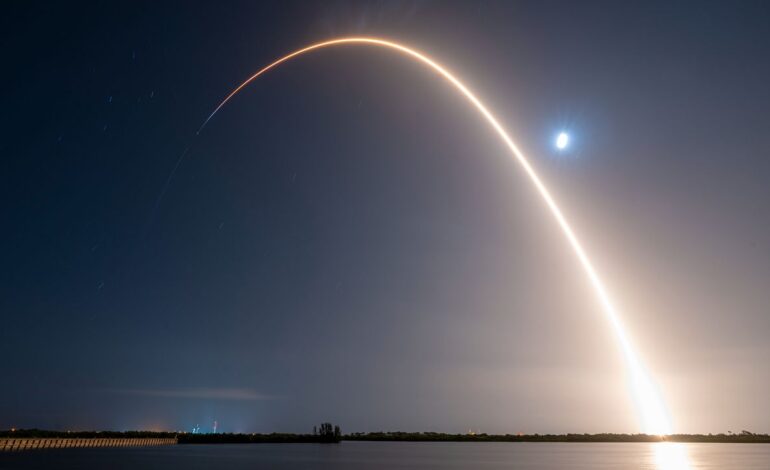SpaceX Launches 100th Mission, Sending Amazon Satellites to Orbit

SpaceX launched its 100th mission of the year on August 7, 2025, successfully sending a Falcon 9 rocket carrying 24 of Amazon’s Project Kuiper internet satellites into orbit. The rocket lifted off from the Cape Canaveral Space Force Station in Florida during a launch window that opened at 10:01 a.m. EDT (1401 GMT). This milestone marks a significant achievement for SpaceX, which is on track to break its own record for the most launches in a single year.
The Falcon 9’s liftoff represents the 97th for the rocket this year, with the remaining three missions comprising suborbital test flights of the Starship vehicle. This reusable spacecraft is being developed by SpaceX for future missions to Mars. The company has also been operating the Falcon Heavy rocket, which last flew in October 2024, launching NASA’s Europa Clipper probe toward Jupiter.
If SpaceX maintains its current launch rate, it aims to complete approximately 165 missions by the end of 2025, surpassing its previous record of 138 launches set in 2024. The breakdown of last year’s missions included 132 Falcon 9 launches, two Falcon Heavy missions, and four Starship test flights. Notably, over 70% of this year’s Falcon 9 launches have focused on expanding Starlink, SpaceX’s broadband megaconstellation currently consisting of more than 8,100 operational satellites.
In contrast, Amazon’s Project Kuiper is still in the initial phases of its buildout. Today’s launch marks the fourth for Kuiper, increasing its constellation count to 102 satellites. The ultimate goal for Project Kuiper is to deploy over 3,200 satellites through more than 80 launches in the coming years. Various rockets will be utilized for this effort, including SpaceX’s Falcon 9, Arianespace’s Ariane 6, Blue Origin’s New Glenn, and United Launch Alliance’s Atlas V and Vulcan Centaur.
Upon successful liftoff, the Falcon 9’s first stage is expected to return to Earth approximately 8.5 minutes later, landing in the Atlantic Ocean on the SpaceX drone ship named “A Shortfall of Gravitas.” This mission will be a debut flight for this particular booster, which is a rare occurrence for SpaceX, as the company typically reuses its rockets. The most frequently flown Falcon 9 has completed 29 missions.
The upper stage of the Falcon 9 will continue its journey to low Earth orbit (LEO), deploying the 24 Project Kuiper satellites over a span of 7.5 minutes, beginning approximately 56 minutes after liftoff. If all goes according to plan, this launch will not only enhance Amazon’s satellite internet initiative but also contribute to the rapidly evolving landscape of global satellite communication.






